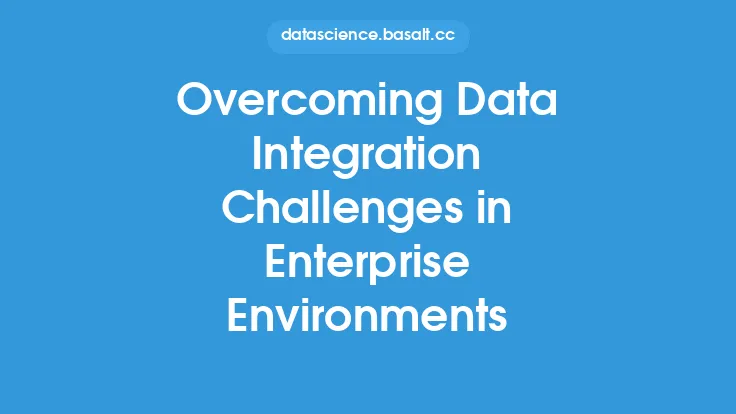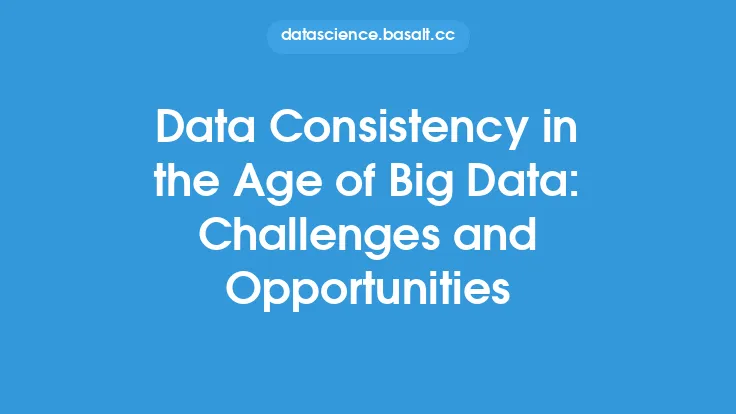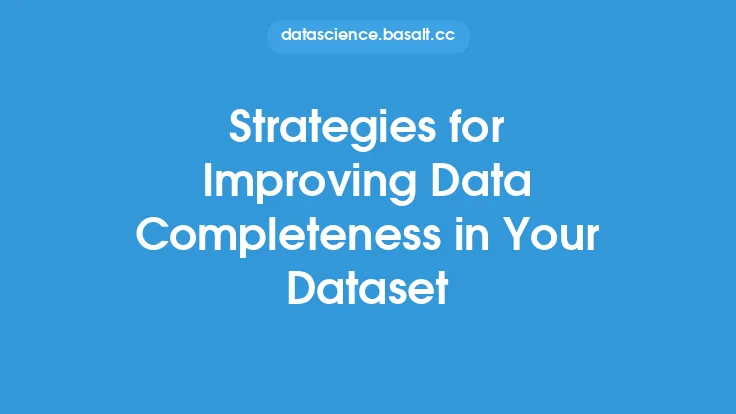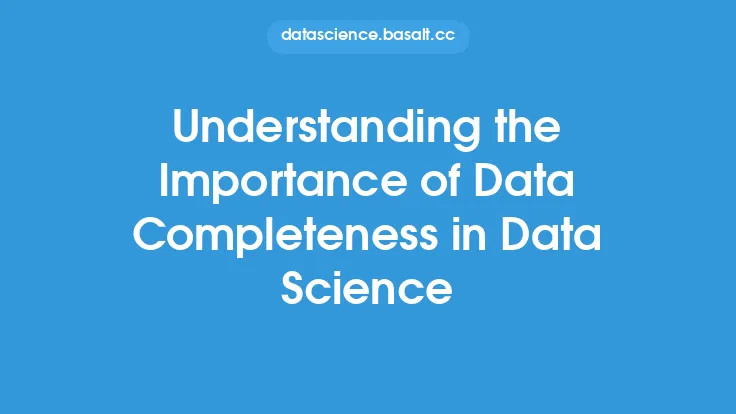Achieving data completeness is a crucial aspect of data quality, as it directly affects the accuracy and reliability of insights derived from the data. However, organizations often face numerous challenges in ensuring that their data is complete, accurate, and consistent. These challenges can arise from various sources, including data collection, storage, processing, and analysis. In this article, we will delve into the common challenges that organizations face in achieving data completeness and discuss strategies for overcoming them.
Introduction to Data Completeness Challenges
Data completeness refers to the extent to which a dataset contains all the required information, without any missing or null values. Incomplete data can lead to biased models, incorrect insights, and poor decision-making. The challenges in achieving data completeness can be broadly categorized into data-related, process-related, and technology-related challenges. Data-related challenges include issues with data quality, data consistency, and data standardization. Process-related challenges include inadequate data collection procedures, insufficient data validation, and lack of data governance. Technology-related challenges include limitations of data storage systems, data processing tools, and data analysis software.
Data-Related Challenges
One of the primary data-related challenges is dealing with missing values. Missing values can occur due to various reasons, such as non-response, data entry errors, or system failures. To overcome this challenge, organizations can use imputation techniques, such as mean, median, or mode imputation, or more advanced techniques like regression imputation or multiple imputation. Another data-related challenge is ensuring data consistency, which can be achieved by implementing data validation rules, data normalization, and data standardization. Data standardization involves converting data into a standard format, which can help reduce errors and inconsistencies.
Process-Related Challenges
Process-related challenges can be overcome by implementing robust data collection procedures, data validation, and data governance. Organizations should establish clear data collection protocols, which include procedures for handling missing values, data entry errors, and data inconsistencies. Data validation involves checking the data for errors, inconsistencies, and completeness, and can be performed using automated tools or manual reviews. Data governance involves establishing policies, procedures, and standards for data management, which can help ensure that data is accurate, complete, and consistent.
Technology-Related Challenges
Technology-related challenges can be overcome by leveraging advanced data storage systems, data processing tools, and data analysis software. Organizations can use data warehousing solutions, such as relational databases or NoSQL databases, to store and manage large datasets. Data processing tools, such as data integration tools or data transformation tools, can help automate data processing tasks, reduce errors, and improve data quality. Data analysis software, such as statistical software or data mining software, can help analyze large datasets, identify patterns, and derive insights.
Strategies for Overcoming Data Completeness Challenges
To overcome data completeness challenges, organizations can implement several strategies. First, they can establish a data governance framework, which includes policies, procedures, and standards for data management. Second, they can implement data validation and data quality checks to ensure that data is accurate, complete, and consistent. Third, they can use data imputation techniques to handle missing values and ensure that data is complete. Fourth, they can leverage advanced data storage systems, data processing tools, and data analysis software to automate data processing tasks, reduce errors, and improve data quality.
Best Practices for Achieving Data Completeness
To achieve data completeness, organizations should follow several best practices. First, they should establish clear data collection protocols, which include procedures for handling missing values, data entry errors, and data inconsistencies. Second, they should implement data validation and data quality checks to ensure that data is accurate, complete, and consistent. Third, they should use data standardization techniques to convert data into a standard format, which can help reduce errors and inconsistencies. Fourth, they should leverage data governance frameworks to establish policies, procedures, and standards for data management. Finally, they should continuously monitor and evaluate data quality, and implement corrective actions to address data completeness challenges.
Conclusion
Achieving data completeness is a critical aspect of data quality, as it directly affects the accuracy and reliability of insights derived from the data. Organizations face numerous challenges in ensuring that their data is complete, accurate, and consistent, including data-related, process-related, and technology-related challenges. By implementing strategies such as data governance, data validation, data imputation, and leveraging advanced technologies, organizations can overcome these challenges and achieve data completeness. Additionally, following best practices such as establishing clear data collection protocols, implementing data validation and data quality checks, using data standardization techniques, and leveraging data governance frameworks can help ensure that data is accurate, complete, and consistent. By prioritizing data completeness, organizations can derive reliable insights, make informed decisions, and drive business success.





